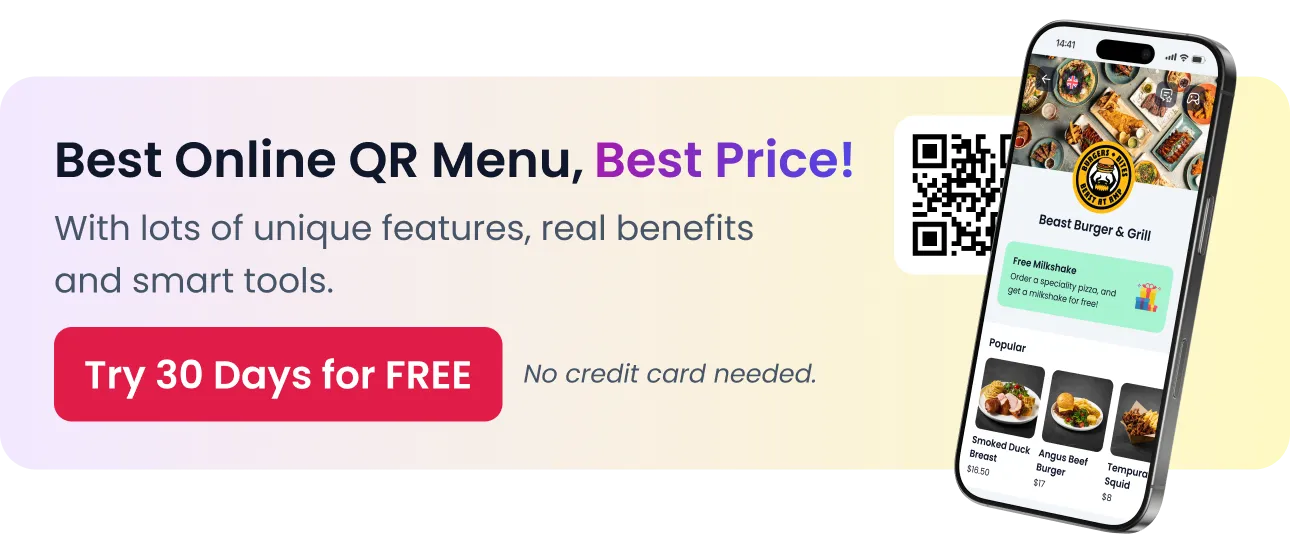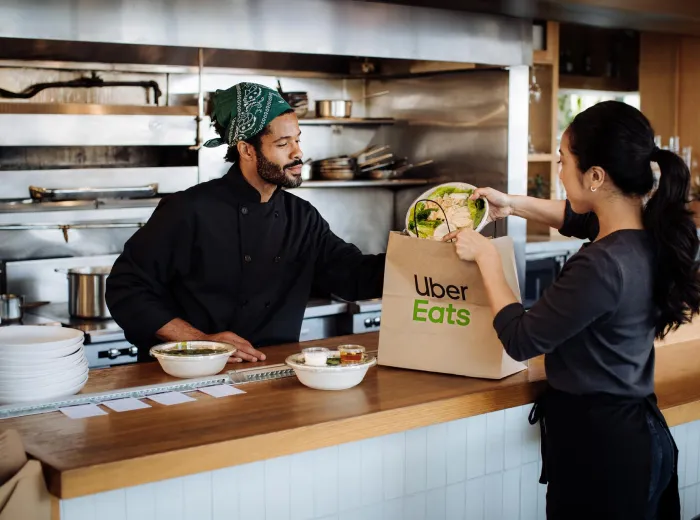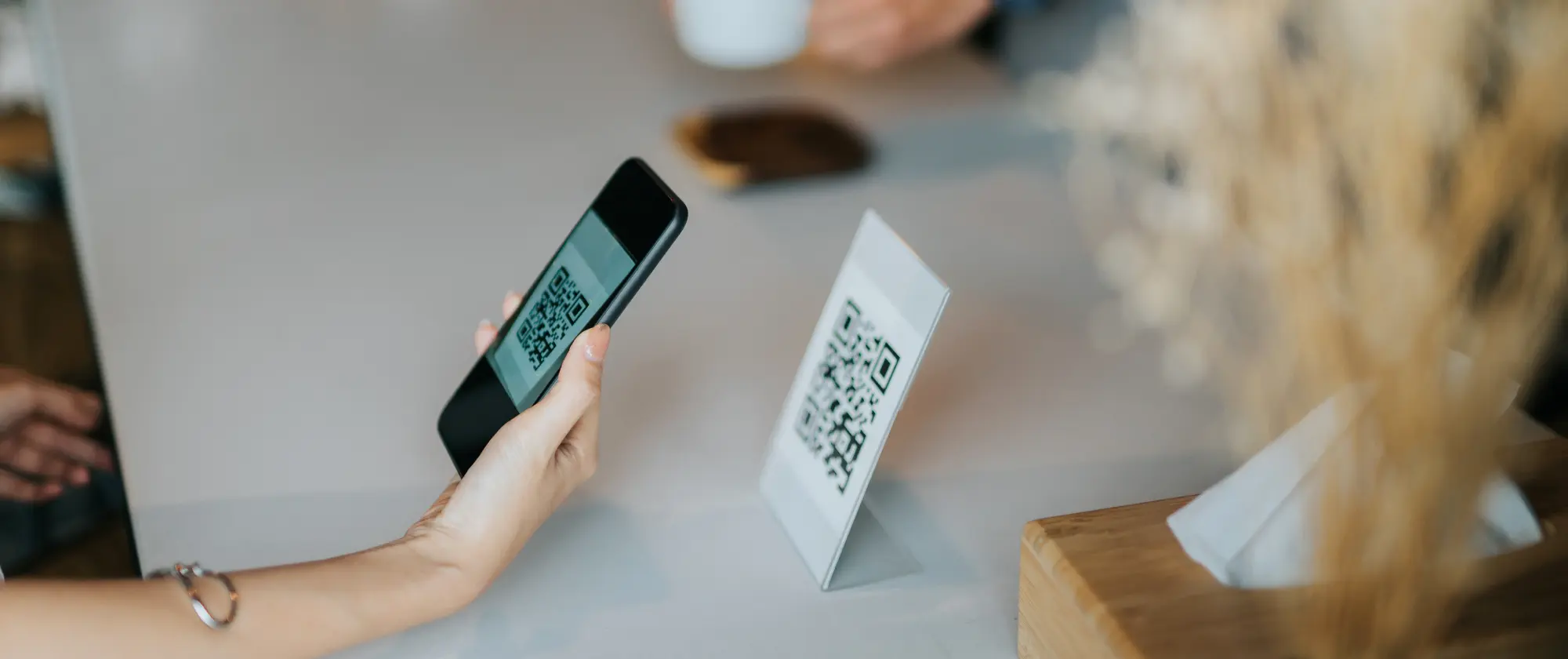
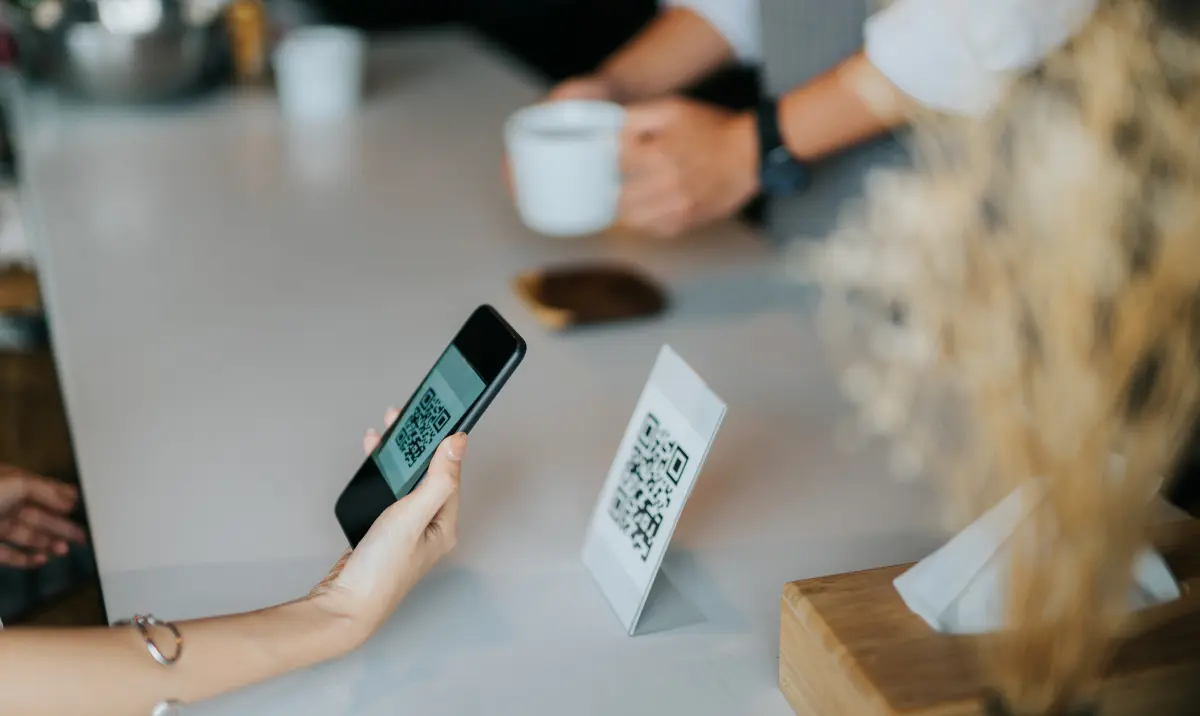
How Does QR Code Ordering Work in Restaurants?
The restaurant industry has embraced innovative technologies to enhance customer experiences and streamline operations. One of the most significant advancements is the adoption of QR code ordering systems. These systems, which allow customers to scan a QR code to view menus, place orders, and even make payments, are quickly becoming a standard feature in modern dining.
QR code ordering eliminates the need for physical menus and reduces reliance on waitstaff, offering a seamless and contactless dining experience. Customers can explore the menu at their own pace, customize orders, and complete transactions without delays. For restaurant owners, this technology opens doors to increased efficiency, cost savings, and valuable customer insights.
As the demand for convenience and digital solutions grows, understanding how QR code ordering works and its benefits can help restaurant owners stay ahead in a competitive market. This article explores the mechanics, advantages, challenges, and future trends of QR code ordering in restaurants, providing actionable insights for successful implementation.
What is QR Code Ordering?
QR code ordering has revolutionized how restaurants interact with their customers, offering a seamless and efficient alternative to traditional ordering methods. By scanning a QR code placed on a table, menu, or receipt, customers gain instant access to a digital menu, allowing them to order and pay directly from their smartphones. This technology enhances convenience, hygiene, and operational efficiency, making it a popular choice for modern dining establishments.
Definition of QR Code Ordering
- QR (Quick Response) Code: A scannable matrix barcode containing encoded information.
- Digital Interaction: Enables customers to access menus, order food, and make payments using their devices.
- Key Features:
- Contactless ordering and payment.
- Real-time menu updates.
- Integrated with restaurant management systems.
Summary: QR code ordering is a digital solution that leverages barcode technology to simplify the customer journey. Its contactless nature and ease of use cater to both customer preferences and operational needs in restaurants.
History and Evolution
- Origins of QR Codes:
- Developed in 1994 by a Japanese company for tracking automotive parts.
- Gradual adoption across industries for marketing and payments.
- Integration in Restaurants:
- Initially used for static menus.
- Evolved with advancements in smartphones and payment technology.
- Recent Trends:
- Accelerated adoption during the COVID-19 pandemic for safety and hygiene.
- Expanding features like customization and loyalty integration.
Summary: QR codes have evolved from simple tracking tools to integral components of restaurant operations, with rapid adoption driven by changing consumer needs and technological advancements.
How QR Code Ordering Works
QR code ordering is a streamlined process designed to enhance convenience for both customers and restaurant staff. By combining the power of smartphones and intuitive software, it simplifies the dining experience from start to finish. Here’s how it works, step by step.
The Scanning Process
- Step 1: Locate the QR code at the table, counter, or receipt.
- Step 2: Open your smartphone’s camera or a QR code scanning app.
- Step 3: Point the camera at the QR code until it captures the code.
- Step 4: Follow the prompt to open a link (usually leading to the restaurant’s digital menu).
Summary: The scanning process is the first interaction customers have with QR code ordering. It’s designed to be quick, intuitive, and accessible to anyone with a smartphone.
Accessing the Digital Menu
- Dynamic Features:
- Display of up-to-date menu items with images and descriptions.
- Options for filtering based on dietary preferences, allergens, or cuisines.
- User-Friendly Design:
- Easy navigation with categories and search functions.
- Highlighted specials and popular items for quick selection.
Summary: The digital menu is a critical component, serving as the primary interface between the customer and the restaurant. Its design and functionality greatly influence the user experience.
Placing an Order
- Steps for Ordering:
- Add items to the virtual cart by tapping on menu selections.
- Customize orders (e.g., toppings, portion sizes, or special instructions).
- Review the cart before proceeding to checkout.
- Real-Time Communication:
- Integrated systems notify the kitchen of orders instantly.
- Reduces delays and minimizes errors.
Summary: Placing an order through a QR code is efficient and offers customization, ensuring that every customer’s needs are met seamlessly.
Payment Options
- Secure Payments:
- Integration with secure gateways for card payments and digital wallets.
- Support for options like Apple Pay, Google Pay, and PayPal.
- Contactless Transactions:
- Eliminates the need to handle cash or payment devices.
- Receipts sent digitally via email or SMS.
Summary: Payment through QR code ordering is designed for security and ease, offering customers a contactless and convenient checkout experience.
By simplifying these steps, QR code ordering enhances the dining process, enabling customers to take control of their experience while optimizing operational efficiency for restaurants.
Benefits of QR Code Ordering for Restaurants
QR code ordering systems are more than just a technological upgrade—they are a transformative tool that can improve efficiency, reduce costs, and enhance the overall dining experience. Below are the key benefits that restaurants can reap by implementing QR code ordering.
Enhanced Efficiency
- Faster Table Turnover:
- Customers can place orders as soon as they’re ready, reducing wait times.
- Streamlined ordering and payment process speeds up table availability.
- Optimized Staff Allocation:
- Waitstaff focus on delivering food and ensuring customer satisfaction rather than order-taking.
- Less reliance on manual processes reduces errors and delays.
Summary: Enhanced efficiency through QR code ordering allows restaurants to serve more customers in less time, maximizing revenue potential and improving operational flow.
Cost Savings
- Reduced Printing Costs:
- No need for regular updates or reprinting physical menus.
- Digital menus can be updated instantly without additional costs.
- Minimized Errors:
- Orders are sent directly to the kitchen, reducing miscommunication.
- Fewer mistakes save money on wasted food and dissatisfied customers.
Summary: By cutting costs on materials and reducing errors, QR code ordering contributes to a more profitable and sustainable restaurant operation.
Improved Customer Experience
- Convenience and Autonomy:
- Customers can order and pay at their own pace.
- Ability to customize orders directly through the digital menu.
- Modern and Interactive Dining:
- Dynamic menus with images and descriptions enhance the dining experience.
- Personalized recommendations can boost customer satisfaction.
Summary: Improved customer experiences lead to greater loyalty and positive reviews, positioning restaurants as modern and customer-centric.
Data Collection and Insights
- Customer Behavior Analytics:
- Track popular menu items, ordering patterns, and peak times.
- Use data to refine menus and promotional strategies.
- Marketing Opportunities:
- Collect customer contact information for future marketing campaigns.
- Promote loyalty programs or special offers during the ordering process.
Summary: The data collected through QR code systems allows restaurants to make data-driven decisions, enhancing both operational efficiency and marketing effectiveness.
With these benefits, QR code ordering systems provide a win-win solution for both restaurants and their customers, making them an essential tool for modern dining establishments.
Benefits of QR Code Ordering for Customers
For customers, QR code ordering offers a streamlined and enjoyable dining experience that aligns with modern expectations of convenience, safety, and customization. Here are the top benefits that make this technology appealing to diners.
Safety and Hygiene
- Contactless Experience:
- Eliminates the need to handle shared menus or payment devices.
- Reduces physical contact with waitstaff, fostering a safer dining environment.
- Post-Pandemic Preferences:
- Meets heightened customer expectations for cleanliness and safety.
- Encourages trust and comfort in dining out.
Summary: QR code ordering addresses customers’ safety concerns, making it a preferred choice in today’s health-conscious world.
Convenience
- Faster Ordering:
- Customers can place their orders immediately without waiting for staff.
- Reduces delays in getting service during busy hours.
- Order Customization:
- Simple interfaces allow diners to modify dishes according to their preferences.
- Easy reordering for additional items without needing to flag down waitstaff.
Summary: The convenience of QR code ordering empowers customers to control their dining experience, leading to greater satisfaction.
Accessibility
- Multi-Language Support:
- Digital menus often provide translations for non-native speakers.
- Facilitates seamless communication for international customers.
- Assistance for Special Needs:
- Larger text options and visual elements help visually impaired customers.
- Allergen filters cater to dietary restrictions.
Summary: QR code systems ensure inclusivity, making dining more accessible and enjoyable for a diverse range of customers.
By addressing safety, convenience, and accessibility, QR code ordering creates a dining experience that meets modern customer needs and expectations.
Challenges of Implementing QR Code Ordering
While QR code ordering offers numerous advantages, it’s not without its challenges. Implementing this technology requires addressing potential barriers to ensure a seamless experience for both customers and staff.
Customer Resistance
- Technology Gaps:
- Some customers, especially older generations, may be unfamiliar with QR codes or resistant to using smartphones for ordering.
- Addressing these gaps may require additional education or alternative options.
- Preference for Traditional Menus:
- Diners accustomed to physical menus may feel disconnected from the dining experience.
- Balancing digital and traditional options can help ease the transition.
Summary: Overcoming customer resistance involves effective communication, education, and providing alternatives for less tech-savvy individuals.
Technical Issues
- Device Compatibility:
- Some smartphones may lack the ability to scan QR codes without downloading additional apps.
- Inconsistent performance across devices can frustrate users.
- Internet Connectivity:
- Poor Wi-Fi or mobile data coverage can disrupt the ordering process.
- Restaurants in remote areas may struggle to implement a reliable system.
Summary: Ensuring technical reliability is critical to avoid disruptions and maintain a smooth ordering process.
Privacy Concerns
- Data Security Risks:
- Collecting customer information through digital systems may raise concerns about data protection.
- Non-compliance with privacy regulations can lead to legal and reputational risks.
- Customer Skepticism:
- Some diners may be reluctant to share personal information, such as email addresses or payment details.
Summary: Addressing privacy concerns requires transparency, robust security measures, and adherence to data protection laws.
While challenges exist, proactive planning, customer education, and reliable technology can help restaurants successfully implement QR code ordering systems and maximize their benefits.
How to Successfully Implement QR Code Ordering
Implementing QR code ordering requires thoughtful planning and execution to ensure a smooth experience for customers and operational efficiency for restaurants. Follow these steps to successfully integrate QR code ordering into your establishment.
Designing a Seamless System
- User-Friendly Menus:
- Create intuitive digital menus with clear categories and descriptions.
- Use high-quality images to showcase dishes.
- Accessibility Features:
- Include language options, larger fonts, and allergen filters.
- Ensure compatibility with various devices and browsers.
- Real-Time Updates:
- Keep menus updated with current prices, specials, and availability.
- Automate changes to reflect real-time inventory.
Summary: A well-designed digital menu is the foundation of a successful QR code ordering system, ensuring ease of use and accessibility for all customers.
Staff Training
- Comprehensive Training:
- Educate staff on how the QR code system works and how to assist customers with technical issues.
- Train employees on troubleshooting basic connectivity or scanning problems.
- Customer Interaction Skills:
- Empower staff to explain the benefits of QR code ordering.
- Encourage proactive assistance for customers unfamiliar with the technology.
Summary: Well-trained staff can bridge the gap between technology and customers, enhancing the overall dining experience.
Marketing Your QR Code System
- Promotional Strategies:
- Use signage, table tents, and digital marketing to inform customers about the QR code system.
- Highlight benefits such as convenience, customization, and faster service.
- Incentives for Adoption:
- Offer discounts or loyalty points for customers using the QR code system.
- Run limited-time promotions to encourage first-time users.
Summary: Effective marketing ensures customers are aware of the new system and motivated to use it, boosting adoption rates.
Regular Updates and Maintenance
- Technical Maintenance:
- Monitor the QR code system regularly for issues like broken links or slow load times.
- Ensure secure payment gateways are functioning correctly.
- Customer Feedback:
- Gather feedback on the digital ordering experience to identify and address pain points.
- Continuously improve based on customer insights.
Summary: Ongoing updates and maintenance are essential to ensure the system remains reliable, efficient, and aligned with customer expectations.
By following these steps, restaurants can successfully implement QR code ordering, creating a seamless, customer-centric experience that drives efficiency and satisfaction.
Future Trends in QR Code Ordering
As technology evolves, QR code ordering systems are expected to incorporate advanced features that enhance the dining experience and streamline restaurant operations. Here’s a look at some of the exciting trends shaping the future of QR code ordering.
Integration with AI and Chatbots
- Personalized Recommendations:
- AI-powered systems analyze customer preferences to suggest dishes.
- Recommendations based on dietary restrictions, past orders, or seasonal specials.
- Automated Customer Support:
- Chatbots handle FAQs, menu queries, and common concerns in real time.
- Enhanced customer engagement without additional staffing.
Summary: AI and chatbots can make QR code ordering more interactive and tailored, improving customer satisfaction and operational efficiency.
Augmented Reality (AR) Menus
- Interactive Visuals:
- Customers can use AR to visualize dishes in 3D before ordering.
- Enhanced engagement with immersive menu experiences.
- Upselling Opportunities:
- AR highlights premium add-ons, chef specials, and pairing suggestions.
- Boosts revenue by encouraging higher-value purchases.
Summary: AR menus take digital dining to the next level, combining technology with creativity to captivate customers.
Expanding Use Beyond Restaurants
- Broader Applications:
- QR code ordering is being adopted by cafes, food trucks, and bars for similar benefits.
- Adaptable for fast-casual dining, event catering, and self-service kiosks.
- Cross-Industry Innovations:
- Integration into grocery stores, stadiums, and airline lounges for seamless ordering experiences.
- Expanding QR technology to support retail and entertainment industries.
Summary: The versatility of QR code ordering makes it a game-changing solution for various sectors, extending its impact beyond traditional restaurants.
Enhanced Data Analytics and Insights
- Real-Time Data Tracking:
- Advanced analytics tools monitor customer behaviors in real time.
- Insights into popular dishes, peak times, and customer demographics.
- Proactive Adjustments:
- Restaurants can dynamically update menus and promotions based on data.
- Tailored marketing campaigns target specific customer segments.
Summary: Future developments in data analytics will allow restaurants to make smarter, data-driven decisions to optimize their operations and enhance customer experiences.
These trends highlight how QR code ordering systems will continue to evolve, blending cutting-edge technology with customer-centric innovations to redefine the future of dining.
Key Takeaways
QR code ordering is transforming the restaurant industry by offering a modern, efficient, and customer-focused approach to dining. Understanding its features, benefits, and challenges is essential for successful implementation.
- What is QR Code Ordering: A contactless system where customers scan a QR code to access menus, place orders, and make payments using their smartphones.
- How It Works: The process involves scanning a QR code, navigating a digital menu, placing orders, and completing secure payments—all in a few simple steps.
- Benefits for Restaurants:
- Enhanced operational efficiency and cost savings.
- Improved customer experiences and loyalty through convenience and customization.
- Valuable data insights for marketing and menu optimization.
- Benefits for Customers:
- A safer, more hygienic dining experience.
- Greater autonomy, faster service, and easy customization of orders.
- Accessibility features catering to diverse needs.
- Challenges:
- Addressing customer resistance and technology gaps.
- Ensuring system reliability and data security.
- Future Trends:
- Integration with AI and AR to offer personalized and immersive experiences.
- Expansion beyond traditional restaurants into other sectors.
- Advanced data analytics for smarter decision-making.
As QR code ordering continues to evolve, adopting this technology can position restaurants for long-term success in a rapidly changing industry. By staying informed and proactive, restaurateurs can leverage this tool to enhance customer satisfaction and drive business growth.
ABOUT THE AUTHOR
Erkin Coban
Your Customers Deserve The Best
And we got Menuviel for them.
The fastest and easy-to-use online QR menu with 12+ unique features. Choose Menuviel and elevate your service quality to the next level.
Use free for the first 30 days.
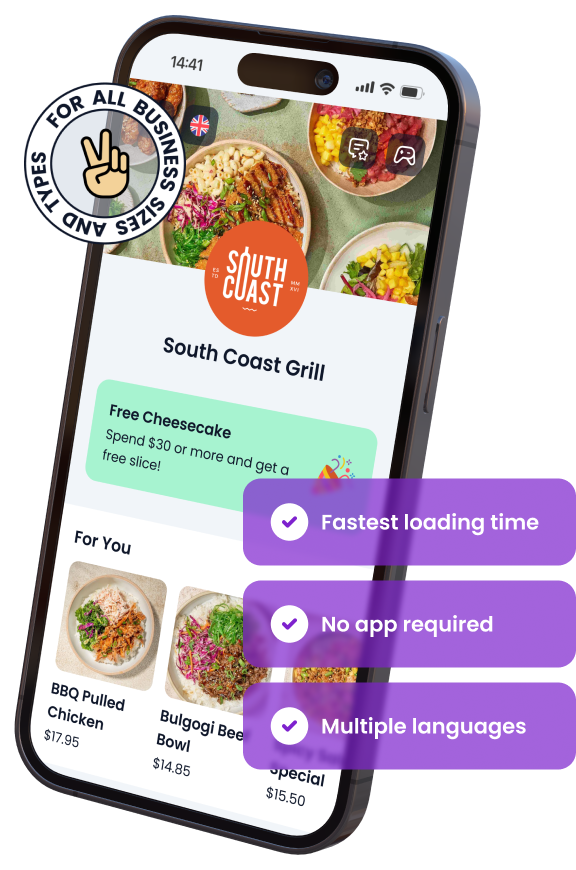
In This Article

Free AI Tools for Restaurants
TRY NOW ➜
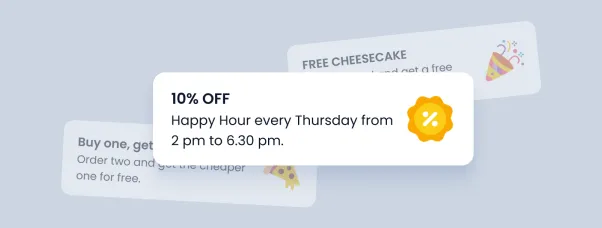
Grab attention with promo and pop-up banners
Highlight offers, events, or announcements right on your menu. At the top or as a pop-up banner.


